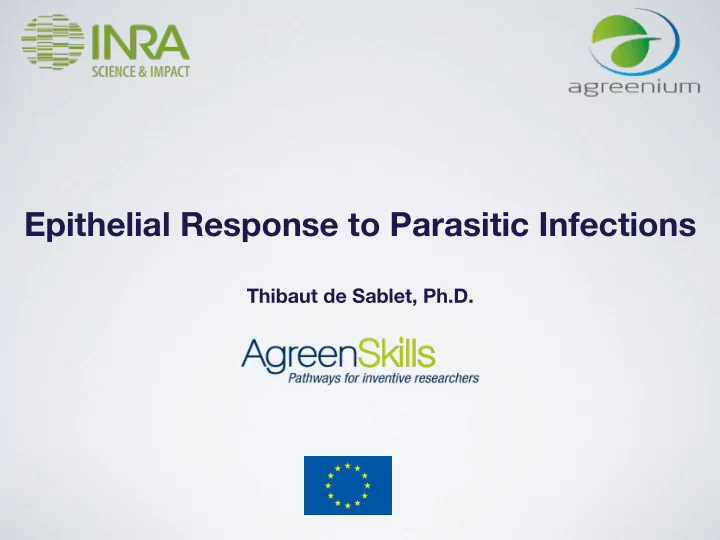

Epithelial Response to Parasitic Infections Thibaut de Sablet, Ph.D.
BACKGROUND 2004-2007 PhD on Enterohaemorrhagic E. coli INRA Clermont-Ferrand 2008-2013 Post Doctoral Fellowship on Helicobacter pylori and Gastric Cancer Vanderbilt University Nashville TN 2014-2015 Agreenskills Post Doctoral Fellowship on Crypstosporidium parvum and Epithelial Cells INRA Nouzilly
Cryptosporidiosis Highly prevalent in cattle in France (40-60%). First cause of neonatal diarrheal disease (ruminants). No vaccine, limited chemotherapy. Economical loss for beef and dairy industry The principal clinical manifestation is a watery diarrhea in young calves that can lead to dehydration and ultimately death of the infected animals
In Humans High prevalence in immunocompromised individuals; responsible for 25% of chronic diarrhea Zoonosis: 748 000 case/year US In developing countries: 8-19% of diarrheal disease In developped countries: 1-3% One Health issue: by controlling and understanding cattle infection we would be able to control human infection.
Physiopathology Enteric Symptoms Diarrhea Moderate Fever Nausea Increase Increase of of Vomiting Chloride Epithelial Secretion Abdominal Permeability Pain
Recommend
More recommend